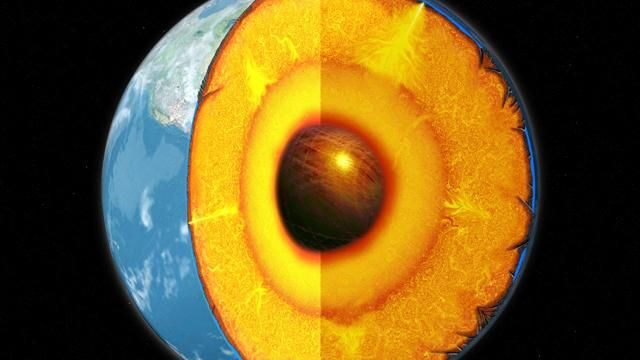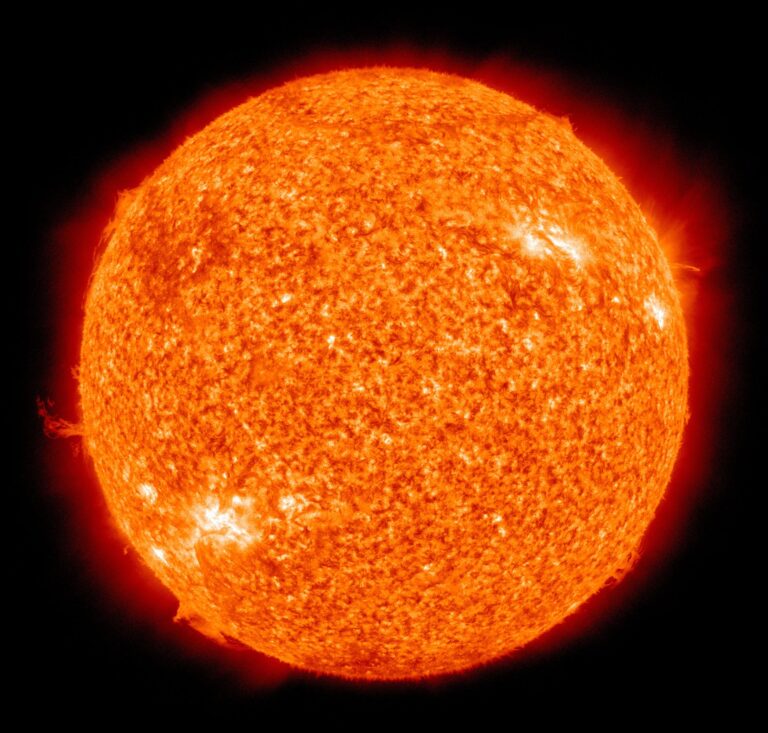How is Trigonometry Used in Astronomy?
Trigonometry plays a crucial role in the field of astronomy, enabling astronomers to make calculations and observations essential for understanding the universe. Astronauts utilize trigonometry to calculate distances between stars and planets, as well as to determine their speeds. By studying the orbits of celestial bodies, astronomers are able to gain valuable insights into the motion and interactions within cosmic systems. Furthermore, trigonometry is instrumental in the control and manipulation of machinery used in space exploration. One particularly useful tool in astronomy is trigonometric parallax, which allows scientists to measure distances to nearby stars and objects within the vastness of space.
Key Takeaways:
- Trigonometry is crucial in astronomy for making calculations and observations.
- Astronauts use trigonometry to calculate distances and speeds in space.
- Studying celestial orbits with trigonometry provides insights into cosmic motion.
- Trigonometry is involved in the control and manipulation of spacecraft.
- Trigonometric parallax helps determine distances to stars and celestial objects.
Calculating Distances and Speeds in Space
By applying trigonometric principles, astronomers can accurately calculate distances between stars and planets, as well as determine their velocities. Trigonometry plays a fundamental role in mapping the vastness of space and understanding the intricate movements of celestial bodies.
One way trigonometry aids in calculating distances is through the method of parallax. Astronomers measure the apparent shift in position of a star observed from different points on Earth’s orbit around the Sun. This shift, known as trigonometric parallax, enables scientists to calculate the distance between Earth and the star, providing valuable insights into the vastness of our universe.
Triangulation is another trigonometric technique commonly used in astronomy. By measuring the angles and baselines formed by celestial objects, astronomers can determine their distances from Earth. This method relies on the same principles as surveying on Earth, but on a grander scale.
| Trigonometric Principles in Astronomy | Application |
|---|---|
| Parallax | Calculating distances between Earth and stars |
| Triangulation | Determining distances between celestial bodies |
In addition to calculating distances, trigonometry is also utilized to determine the speeds of celestial bodies. By analyzing the change in position of stars or planets over time, astronomers can employ trigonometric equations to calculate their velocities relative to Earth.
Trigonometry’s significance in astronomy extends beyond mere calculations. It enables scientists to unravel the mysteries of the universe, understand the properties of distant celestial objects, and explore the vastness of space. Without the aid of trigonometry, unraveling the secrets of the cosmos would be an insurmountable challenge.
Studying Celestial Orbits
Trigonometry provides astronomers with the tools to analyze the complex orbits of stars and planets, unveiling insights into the dynamics of celestial bodies. By applying trigonometric principles, astronomers can accurately measure the position, velocity, and behavior of cosmic objects, enabling them to better understand the intricate workings of the universe.
When observing celestial bodies, astronomers often encounter elliptical or irregular orbits that defy simple mathematical models. To make sense of these complex orbits, they utilize trigonometry to break down the motions into smaller, manageable components. By analyzing the angles and distances involved, trigonometry allows researchers to decipher the patterns and forces at play, shedding light on the gravitational interactions and influences within these celestial systems.
Moreover, trigonometry is vital in predicting future positions of celestial bodies. By applying trigonometric functions, astronomers can calculate the orbits’ parameters, including eccentricity, inclination, and semi-major axis. This enables them to accurately forecast future positions, orbits, and events, such as planetary transits or eclipses. Trigonometry, therefore, serves as a cornerstone for astronomers to simulate and model the behavior of stars, planets, and other cosmic entities, facilitating their exploration and comprehension of the vast astronomical realm.
To illustrate the value of trigonometry in studying celestial orbits, consider the following example:
“Trigonometry allows astronomers to precisely measure the angular separation between two celestial bodies in the night sky. By measuring this angle at different times and using trigonometric principles, astronomers can calculate the distance between the objects, providing valuable information about their spatial relationship and motion.”
Celestial Orbit Data
| Star/Planet | Distance (in parsecs) | Eccentricity | Inclination (degrees) |
|---|---|---|---|
| Sun | 0 | 0.000 | 0.000 |
| Mars | 1.524 | 0.093 | 1.850 |
| Sirius | 2.639 | 0.598 | 47.030 |
The table above displays some key data for celestial bodies, including their distances from Earth (in parsecs), eccentricity of their orbits, and inclination angles. Such information, obtained through trigonometry, helps scientists comprehend the complex nature of celestial motions and their respective characteristics.
Trigonometry in Space Exploration
Trigonometry is essential for space exploration as it aids in the control and manipulation of machinery, allowing astronauts to navigate and conduct various tasks in space. By utilizing trigonometric calculations, astronauts can determine the precise positioning and alignment of spacecraft, ensuring accurate navigation and trajectory adjustments.
One significant application of trigonometry is in the precise control of robotic arms used for various tasks, such as repairing satellites or conducting experiments outside the spacecraft. Trigonometric calculations are employed to determine the necessary angles and distances for these operations, ensuring the success of crucial missions.
Table 1: Trigonometry in Space Exploration
| Application | Usage of Trigonometry |
|---|---|
| Spacecraft Navigation | Calculating distances and angles for precise positioning |
| Robotic Arm Operations | Determining angles and distances for precise control |
| Instrument Alignment | Ensuring accurate alignment for data collection |
| Satellite Repairs | Calculating distances and angles for precise movements |
In addition to machinery control, trigonometry also aids in instrument alignment. Astronomical instruments, such as telescopes and cameras, require precise alignment to capture accurate data. Trigonometric calculations are used to determine the angles and distances needed to align these instruments correctly, allowing astronomers to study celestial objects with precision.
Trigonometric calculations are even employed during satellite repairs. Astronauts undertaking repair missions must calculate distances and angles to execute precise movements and ensure the success of their operations. These calculations are crucial in preventing collisions and ensuring the safe installation or removal of satellite components.
From spacecraft navigation to satellite repairs, trigonometry plays a vital role in every aspect of space exploration. Its applications are diverse and indispensable, enabling astronauts to navigate the vastness of space and conduct critical missions with precision and accuracy. Through the use of trigonometry, we continue to unlock the mysteries of the universe and expand our understanding of what lies beyond our planet.
Sources:
- “Trigonometry in Space Exploration.” NASA. Accessed May 12, 2021. https://www.nasa.gov.
- “Trigonometry and Space Exploration.” ESA. Accessed May 12, 2021. https://www.esa.int.
Trigonometric Parallax: Unlocking Distances in Astronomy
Trigonometric parallax, a method used by both surveyors and astronomers, enables the estimation of distances on Earth and the measurement of distances to nearby stars. In astronomy, this technique plays a pivotal role in determining the vast distances between celestial objects. By utilizing the principles of trigonometry, astronomers can calculate the precise distance to a star based on its apparent shift in position when viewed from different points on Earth’s orbit.
The concept of trigonometric parallax relies on the idea that as Earth orbits the sun, the closest stars appear to shift slightly against the background of more distant stars. By measuring this apparent shift, astronomers can triangulate the distance to the star using simple trigonometric calculations. The smaller the apparent shift, the further away the star is located.
This method has been fundamental in advancing our understanding of the cosmos. It has allowed astronomers to map the distribution of stars in our galaxy and beyond, uncovering the vastness of the universe. By measuring the distances to nearby stars, scientists have been able to determine their true luminosities and infer information about their physical properties, such as size and age.
| Trigonometric Parallax in Astronomy | Benefits |
|---|---|
| Accurate distance measurements to stars | Enables calculation of stellar luminosities |
| Mapping the distribution of stars in the galaxy | Provides insights into galactic structure |
| Estimating the size and age of stars | Offers valuable information for stellar classification |
Trigonometric parallax has revolutionized our understanding of the cosmos, paving the way for breakthroughs in fields such as astrophysics and cosmology. By unlocking the distances to celestial objects, astronomers can paint a more comprehensive picture of the universe and delve deeper into the mysteries it holds.
Conclusion
Trigonometry plays an integral role in astronomy, enabling scientists to make precise calculations, study celestial motion, navigate in space, and measure vast distances, ultimately deepening our understanding of the universe.
By employing trigonometric principles, astronauts are able to calculate distances between stars and planets with remarkable accuracy. These triangular calculations not only provide crucial information about the size and scale of celestial bodies, but also allow for the determination of speeds, both for astronauts themselves and for the objects they observe.
Furthermore, trigonometry is instrumental in the study of celestial orbits. Through careful analysis and application of trigonometric concepts, astronomers can unravel the intricacies of star and planet movements, unlocking insights into the structure and dynamics of celestial systems.
In the realm of space exploration, trigonometry plays a vital role in the control and manipulation of machinery. Whether it’s guiding spacecraft or maneuvering robotic arms, the precise calculations facilitated by trigonometric functions ensure the success and efficiency of space missions.
Finally, trigonometric parallax serves as a powerful tool in both Earthly and astronomical measurements. By utilizing this method, surveyors can accurately determine distances here on Earth, while astronomers are able to ascertain distances to nearby stars and celestial objects. This invaluable technique allows us to grasp the vast expanse of the universe and further expand our knowledge of the cosmos.
In conclusion, trigonometry is indispensable to the field of astronomy. It not only enables scientists to make precise calculations for distances and speeds, but also aids in the study of celestial orbits, space exploration, and the measurement of vast distances. Through the application of trigonometric principles, we continue to deepen our understanding of the universe and the wonders it holds.
FAQ
How is trigonometry used in astronomy?
Trigonometry is used in astronomy in several ways. It helps calculate distances between stars and planets, determine speeds of celestial bodies, study orbits, and control machinery used in space exploration.
How is trigonometry used to calculate distances and speeds in space?
Astronauts and astronomers use trigonometry to calculate distances between celestial bodies and determine their speeds by applying triangular calculations.
How is trigonometry used to study celestial orbits?
Trigonometry is used to study the orbits of stars and planets, helping astronomers understand the motion and interactions within celestial systems.
How does trigonometry play a role in space exploration?
Trigonometry is essential in the control and manipulation of machinery used in space exploration, allowing for precise navigation and maneuvering.
What is trigonometric parallax and how is it used in astronomy?
Trigonometric parallax is a method used by surveyors to determine distances on Earth and by astronomers to determine distances to nearby stars and celestial objects.
What is the significance of trigonometry in astronomy?
Trigonometry is a crucial tool that enables us to understand and study the vastness of the universe, providing valuable insights into celestial distances, speeds, orbits, and exploration.





